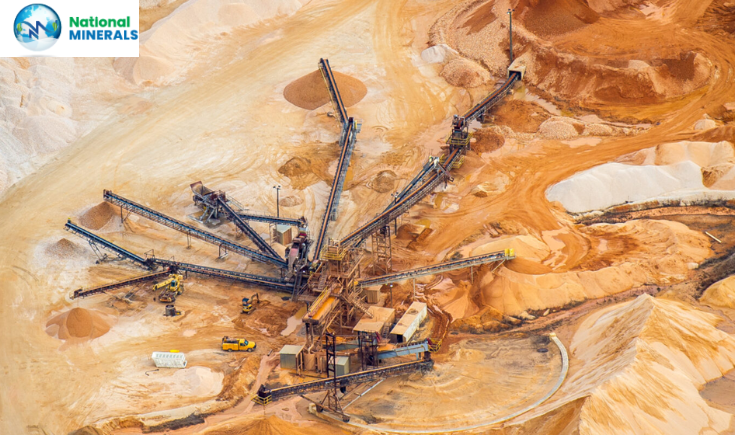Sand mining refers to the extraction of sand through an open pit primarily. It has been going on in India for centuries. The activity, in fact, carried out both an adverse environmental and societal effect, has grown to a great height in a couple of past years due to rapid urbanization and industrialization of the country. The extensive river systems, coastal regions, and enormous construction requirements in India make it a place where huge sand mining occurs across various regions. This blog will
identify the key regions in India where sand mining is carried out extensively, why it is done, and the consequences.
1. The Ganga and Yamuna River Basins
The Ganga and Yamuna rivers are the two most important rivers in India, where millions of livelihoods exist and equal agricultural activities depend on them. Sand mining is a significant activity in the Ganga and Yamuna River basins, mostly in the states of Uttar Pradesh, Bihar, and Uttarakhand. The high-quality river sand from these regions is in great demand due to the quality and constancy it possesses.2. Coastal Regions of Gujarat
Gujarat has a considerably long coastline along the Arabian Sea and is an active region as far as extraction of sand is concerned. Beach sand and sand from the mouths of the rivers at the coastal area have high utility by the industries and in construction. The beach as well as river bank sand mining has prompted necessity to be studied for the environmental impacts because it damages coastal ecology end-mass with large-scale extraction, particularly in the Gulf of Khambhat.3. South States: Tamil Nadu and Karnataka
Southern India represents the strongholds of sand mining. Rivers in Tamil Nadu such as Palar, Vaigai, and Cauvery; and rivers in the coastal and central parts of Karnataka have been intensively mined for sand. This sand caters to the increasing base of the construction industry in populous cities such as Chennai and Bangalore. These unregulated mining practices have resulted in huge environmental degradation, such as depletion of water tables and destruction of riverbeds.4. Odisha: The Eastern State
The other critical area for sand mining in Odisha, with its vast river systems like Mahanadi and Brahmani. The boom in construction in urban centers like Bhubaneswar and Cuttack increases the demand for sand, which is met through extensive mining activities. Sand extracted from the rivers of Odisha is in high demand due to its quality, but it's over-extraction leads to great ecological impacts associated with increased flooding and erosion.5. Western State of Maharashtra
The variedly topographic Maharashtra, with the Sahyadri mountain range and extended river systems, is one among the prominent regions of sand mining. Sand transported in substantial quantities from the rivers flowing down the Western Ghats and the coastal regions is made use of catering to the construction requirements of Mumbai and other urban areas. The large-scale mining of sand, thus induced, is plagued with legal and environmental repercussions.Factors Responsible for Extensive Sand Mining
1. Urbanization and Infrastructure Development:The fast urbanization and infrastructure development in India greatly contribute to the large-scale extraction of sand since a large quantity of sand is required to build the roads, bridges, residential complexes, and commercial buildings.2. Economic Factors:Sand mining has become a business in itself: a good reinvestment for the land and water resource owners. Moreover, with the continued need for sand in the construction business, the mining of sand remains to be a lucrative business, often culminating into illegal and uncontrolled sand mining.
3. Industrial Use:Apart from construction, sand is used in various industrial processes, such as in making glass, foundries, and in producing silicon chips. This industrial demand also results in vast mining of sand across different regions.
Environmental and Societal Implications
1. Environmental Degradation:The fast urbanization and infrastructure development in India greatly contribute to the large-scale extraction of sand since a large quantity of sand is required to build the roads, bridges, residential complexes, and commercial buildings.
2. Agricultural Impact:
Sand mining has negative effects on agriculture because it depletes the riverbeds and results in a reduction of ground and water tables. With reduced water in such areas—most depend on rivers for irrigation—the farmers have to strategize on how to maintain their crops.
3. Social Conflicts:
Social conflicts, in particular, usually arise with sand mining, especially when it is illegal. The involvement of local communities and landowners in illegal extraction and sometimes even organized crime leads to disputes and violence.
The activity of sand mining is a very important but disturbing issue in India, which has been spoiled by the tendency of fast urbanization and industrial growth. Areas of interest for sand mining are in the Ganga and Yamuna River basins, the coastal tracts of Gujarat, the southern states of Tamil Nadu and Karnataka, Odisha, and Maharashtra. National Minerals supports responsible extraction of sand. It aims to reduce adverse environmental and social impacts caused by the extraction of sand, through priority in sustainability and tight regulatory control, so as to balance economic development with the conservation of natural ecosystems.

